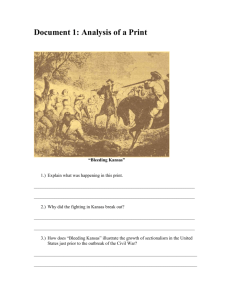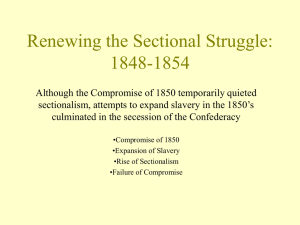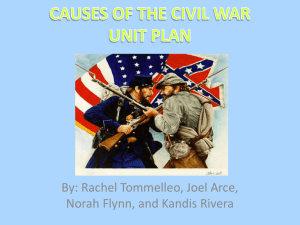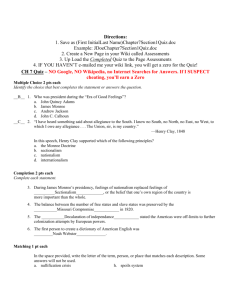AP US History Review: Unit 3 - gardner-lhs
advertisement
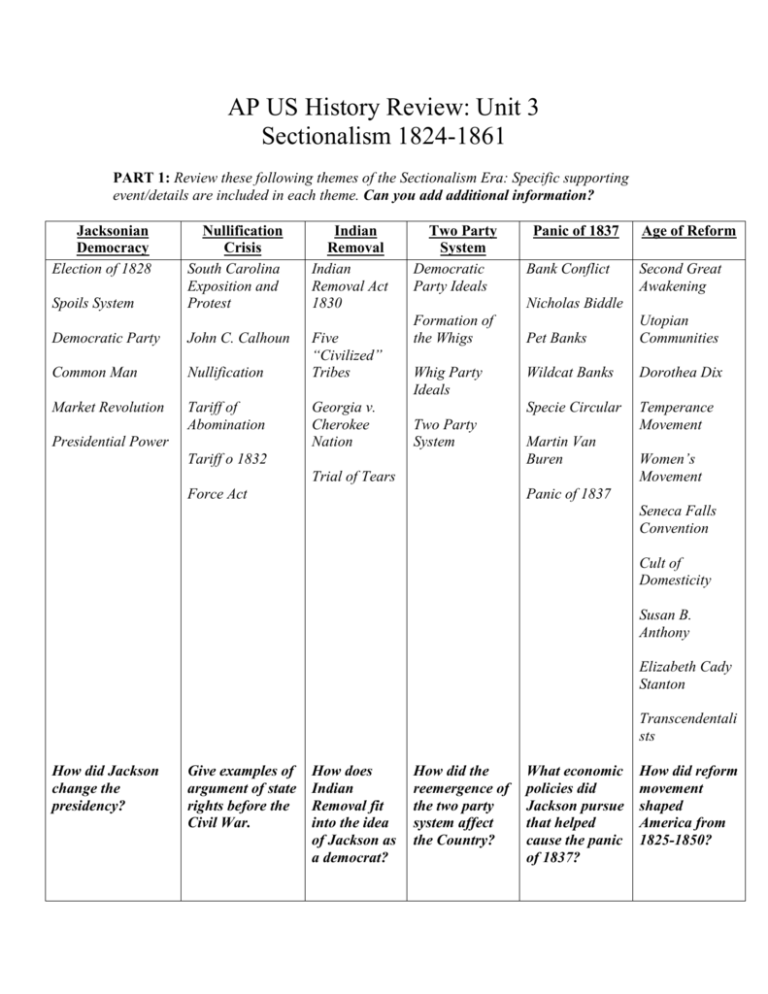
AP US History Review: Unit 3 Sectionalism 1824-1861 PART 1: Review these following themes of the Sectionalism Era: Specific supporting event/details are included in each theme. Can you add additional information? Jacksonian Democracy Election of 1828 Spoils System Nullification Crisis South Carolina Exposition and Protest Democratic Party John C. Calhoun Common Man Nullification Market Revolution Tariff of Abomination Presidential Power Indian Removal Indian Removal Act 1830 Five “Civilized” Tribes Georgia v. Cherokee Nation Two Party System Democratic Party Ideals Panic of 1837 Bank Conflict Age of Reform Second Great Awakening Nicholas Biddle Formation of the Whigs Whig Party Ideals Two Party System Tariff o 1832 Pet Banks Utopian Communities Wildcat Banks Dorothea Dix Specie Circular Temperance Movement Martin Van Buren Trial of Tears Force Act Women’s Movement Panic of 1837 Seneca Falls Convention Cult of Domesticity Susan B. Anthony Elizabeth Cady Stanton Transcendentali sts How did Jackson change the presidency? Give examples of argument of state rights before the Civil War. How does Indian Removal fit into the idea of Jackson as a democrat? How did the reemergence of the two party system affect the Country? What economic policies did Jackson pursue that helped cause the panic of 1837? How did reform movement shaped America from 1825-1850? Slavery and Politics Missouri Compromise Nat Turner Rebellion Class Struggle Nativism Nat Turner Rebellion Slave Codes Early Industrial Development Compromise of 1850 Common Man in Politics Mexican American War Texas War for Independence Sectional Tension 1850-1860 Missouri Compromise Annexation of Texas Fugitive Slave Law Rio Grande Boarder Conflict Uncle Tom’s Cabin Fugitive Slave Law Winfield Scott Results of War Popular Sovereignty William Lloyd Garrison The Liberator Elijah Lovejoy Spot Resolution Kansas Nebraska Act Abolition Movement Treaty of Guadalupe Hidalgo Frederick Douglas Hinton Helper “Impending Uncle Tom’s Crisis of the Cabin South” Dred Scott and John Brown Dred Scott Case and its effect North and South John Brown and Bleeding Kansas Harpers Ferry Raid John Brown as a symbol Kansas Nebraska Act John Brown Bleeding Kansas Dred Scott Uncle Tom’s Cabin Election of 1860 Dred Scott John Brown Raid How did Political Compromise keep the question of slavery from being discussed from 1820 -1860? Does Jacksonian Democracy create more equality in the United States? How did the Mexican American War affect Slavery in America? Was the Civil War Inevitable? What affect did the Abolition Movement have on the average American? How did the Supreme Court effect the Slavery question before the Civil War? Part 2: Create three time lines that range from 1776 to 1820. The first time line should include significant political events. The second timeline should include significant events economic events. The Third timeline should include significant social events. Sectionalism Era Political Events 1824 1860 Sectionalism Era Economic Events 1824 1860 Sectionalism Era Social Events 1824 1860 Part 3: DBQ’s and Free Response Essays – The following are past DBQ and Free Response questions that involve the Sectionalism Era as all or part of the question. Create some of your own essay questions from the Sectionalism Era. Jacksonians as guardians of democracy Reform and Democratic ideals John Brown’s Raid Constitution and the 1850’s To what extent did the debates about the Mexican American war reflect the sectional interests of Americans from 1845 – 1855 Describe the pattern of immigration in TWO of the periods (1820 to 1860; 1880 to 1924; 1965 to 2000) Why did the compromises of the early 19th century end? Analyze the effectiveness of political compromise in reducing sectional tension in the period 1820 to 1961? To what extent did the role of women change in American society between 1790 and 1860 in two of the following areas (Domestic, Economic, Political, Social) In what ways did developments in transportation bring about economic and social change in the Untied States in the period 1820 to 1860 Identify and analyze the factors that changed the American City in the second half of the nineteenth century. The Jacksaonian Period has been celebrated as the era of the “Common Man.” To what extent did the period live up to its characterization? Chose TWO (Economic development, Politics, Reform Movements) Assess the moral arguments and political actions of those opposed to the spread of slavery in the context of Two of the following (Missouri Compromise, Mexican/American War, Compromise of 1850, Kansas-Nebraska Act) How did Two of the following contribute to the reemergence of a two party system in the period 1820 to 1840? (Major political personalities, states’ rights, economic issues) Your Sectionalism Essay Questions: 1.) 2.) 3.)


